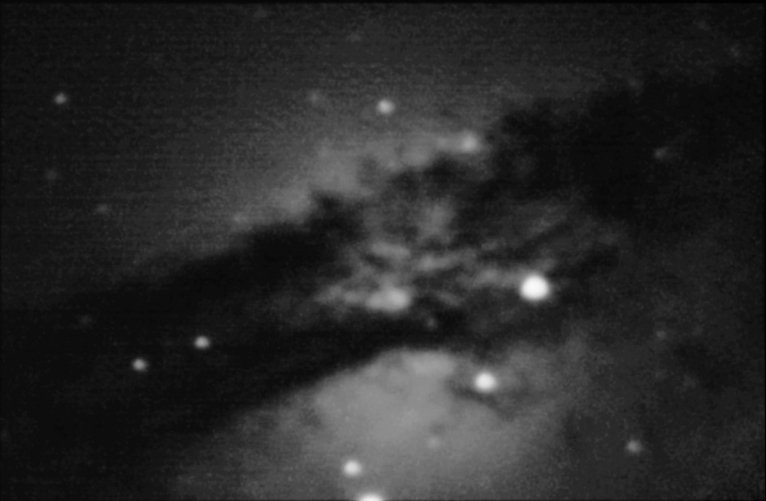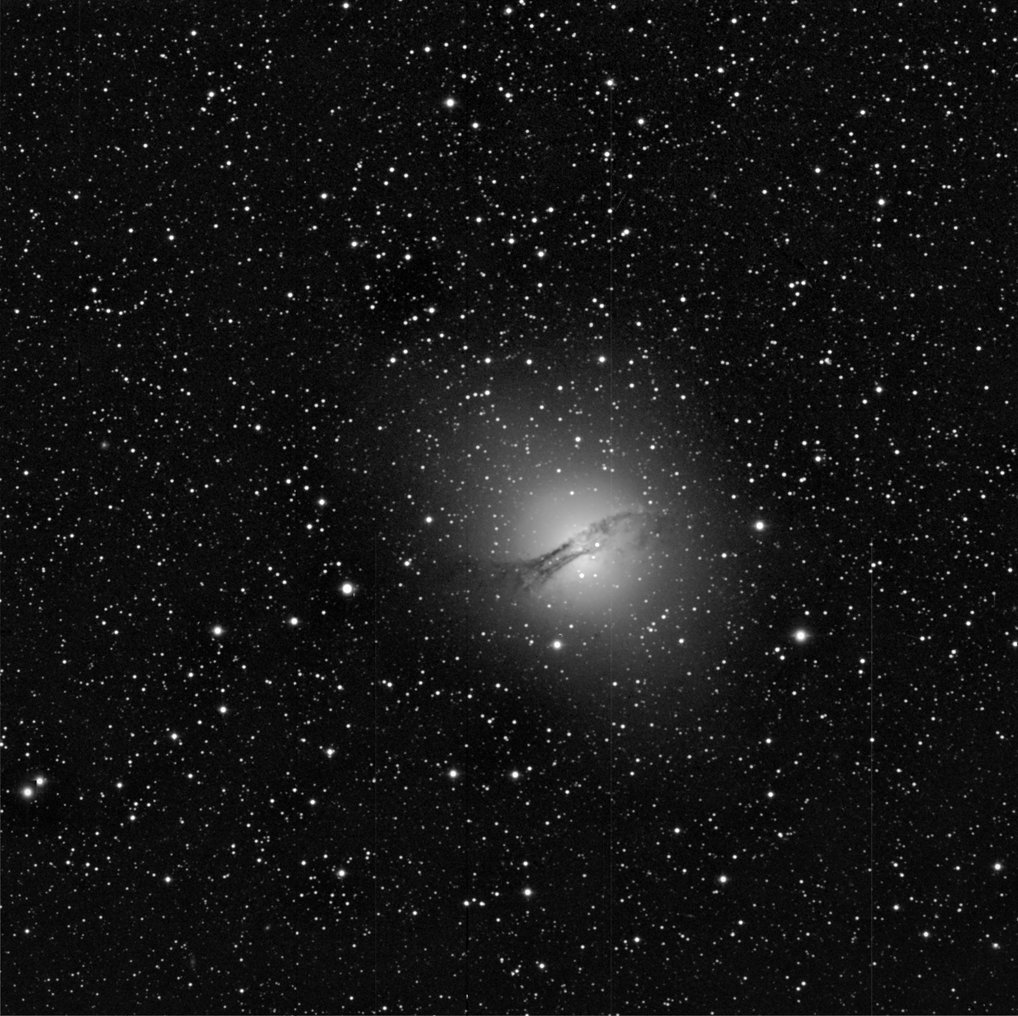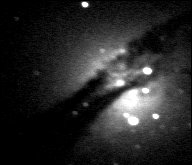
Combination of 3, 3 minute exposures, SBIG ST4 CCD.
300mm f/6 newtonian telescope at prime focus.

A large and bright, eliptical galaxy, NGC 5128 is one of the most interesting galaxies in the southern skies. It is bright enough to be visible in binoculars, and can be observed with the naked eye under very dark skies. The distance to the galaxy is somewhat uncertain, but appears to be about 10 million light years, making it slightly more distant than M81. If this is the case then NGC 5128 is the most distant object visible to the naked eye. In an 8" telescope the dark dust lane crossing the centre of the galaxy is very prominent.
NGC 5128 is one of the largest galaxies known, with an estimated mass nearly 20 times that of the Milky Way. It is also one of the strongest sources of radio waves in the southern sky.
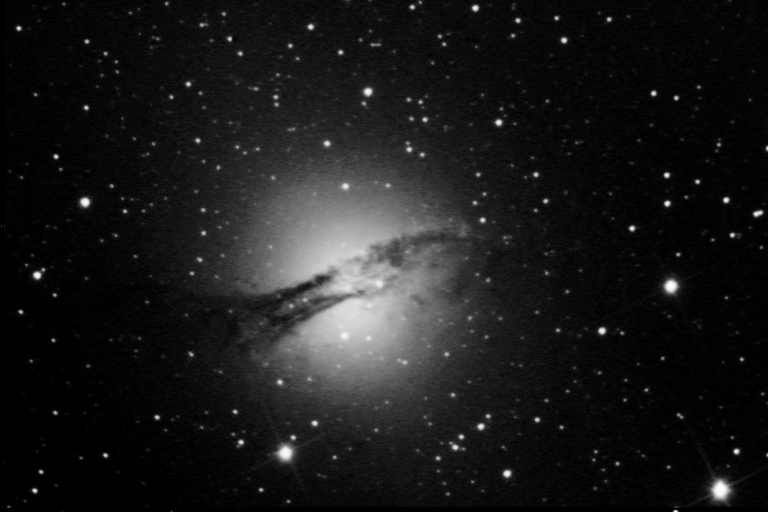
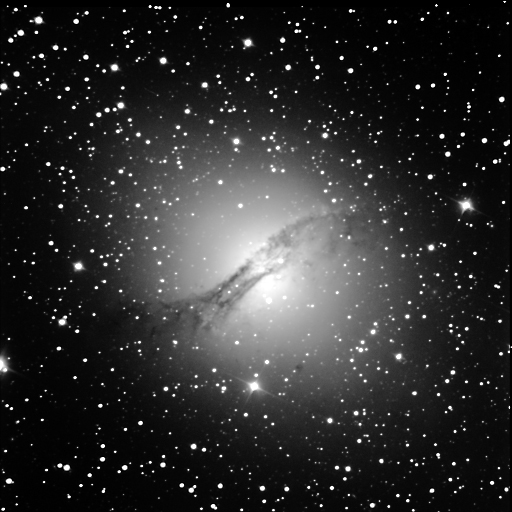
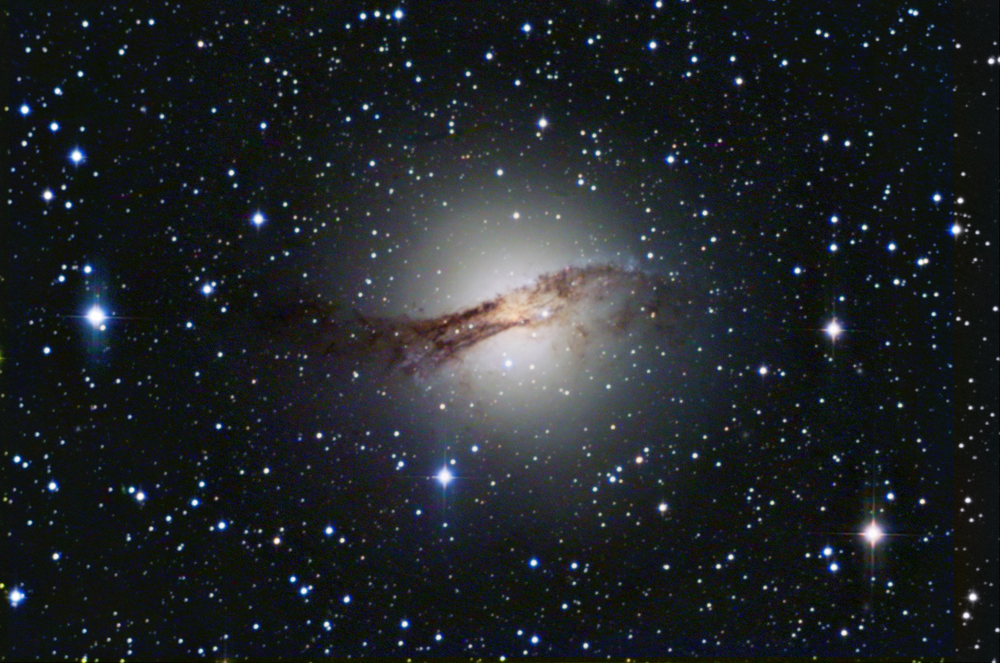
If you look very carefully at the above image, you can see a number of very small fuzzy objects that look like very tiny galaxies around NGC 5128. Most of these are not galaxies, but rather are globular clusters belonging to NGC 5128!
